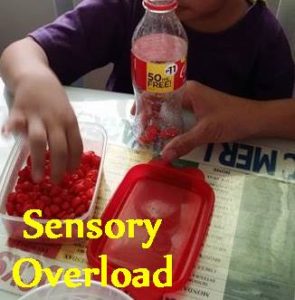 People with autism can be sensitive to lights, sounds, smells, and sights and can lead it to sensory overload and cause to meltdowns. Sensory overload happens when one or more of the body senses experience over stimulation from the environment. These senses such as hearing, sight, smell and taste, touch and vestibular. Loud noise, crowded or cluttered spaces, bright lights, strong smells or aromas, tactile sensation can aggravate sensory overload most especially with the people with autism.
People with autism can be sensitive to lights, sounds, smells, and sights and can lead it to sensory overload and cause to meltdowns. Sensory overload happens when one or more of the body senses experience over stimulation from the environment. These senses such as hearing, sight, smell and taste, touch and vestibular. Loud noise, crowded or cluttered spaces, bright lights, strong smells or aromas, tactile sensation can aggravate sensory overload most especially with the people with autism.
The common treatment for sensory overload is occupational therapy but it is very important to identify the things that triggers sensory overload. The easy way to ease sensory overload is to remove from the situation or reducing sensory input such as elimination distressing sound or lowering the lights.
Children with autism spectrum disorder (ASD) or sensory processing disorder (SPD) may experience sensory overload than typically developing children so it is best understand the sensory needs of these children. It is important to identify child’s sensory preferences of what calms him, what alerts him and what he seeks or avoids.
Some parents and therapies provides list of sensory activities in a child’s routine activity to help keep the nervous system calm and focus. Sensory effect includes deep pressure, proprioception, and vestibular. Deep pressure will calm nervous system, proprioception will organize nervous system while vestibular is slow movement to calm and alert.
As parent of children with ASD or SPD, it is essential to know the cause of sensory overload in order to prevent or avoid it.
